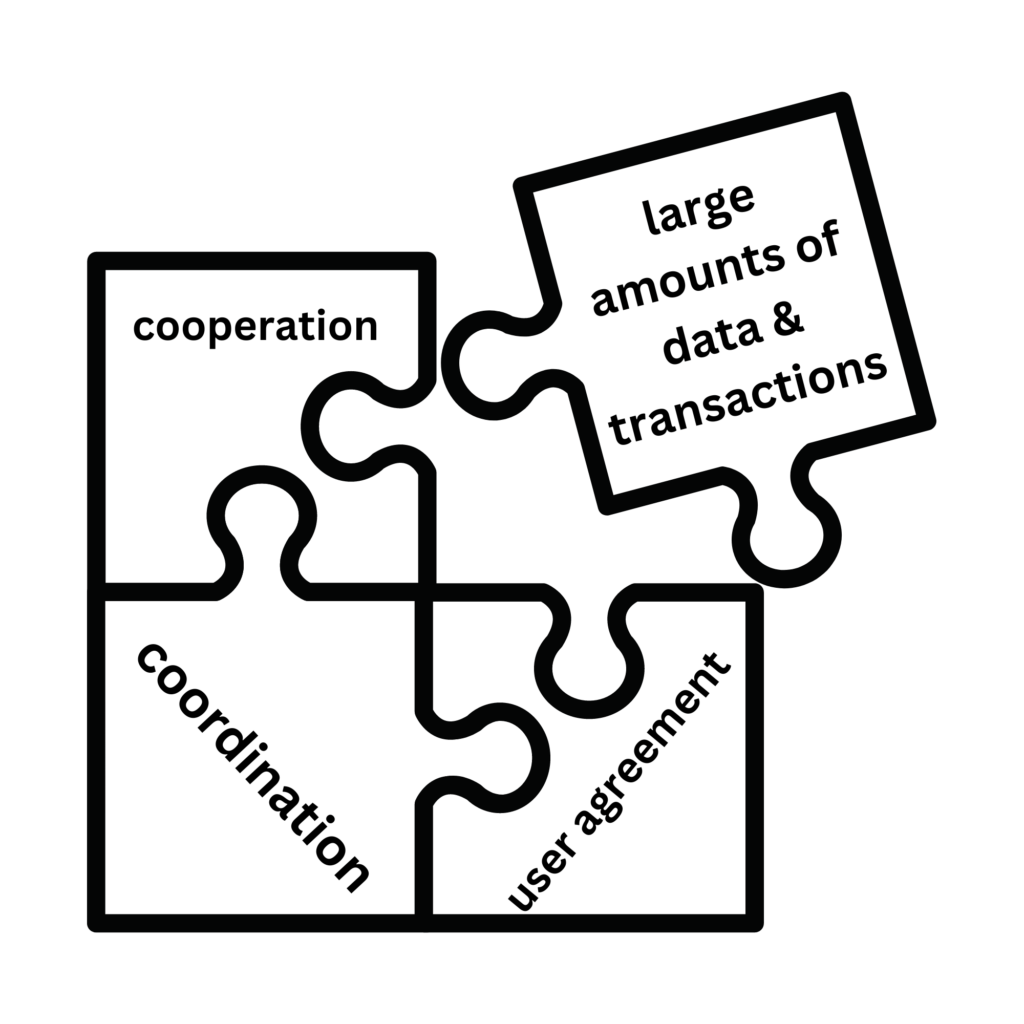Enter blockchain, the revolutionary technology poised to change the way we store and transfer data. Blockchain is a distributed ledger technology that enables users to securely store and transfer data without the need for a centralized record keeper.
Blockchain is like a locksmith managing a large building. Each room has its own lock, and the locksmith is responsible for ensuring that only the right people enter the right rooms. The locksmith keeps track of which keys open which doors and records all of the entries and exits. The locksmith is like the blockchain, making sure that everyone has access to the right information, and that all transactions are secure and reliable.
With its potential to revolutionize the way we do business, this new technology is quickly becoming the first choice for many industries.
In this article, we’ll explore the world of blockchain:
- Overview and Definition of Blockchain
- The Power of a Decentralized System
- Important Terminology
- How the Blockchain Fundamentally Works
- Challenges Faced by Blockchain
- How it can be Used to Revolutionize the Digital World
- To Conclude

Overview and Definition of Blockchain
What is Blockchain?

Blockchain is an emerging technology that has the potential to revolutionize a wide range of industries. It is a decentralized, distributed digital ledger that allows for the secure and transparent storage of data.
This technology has gained significant attention in recent years due to its potential applications in areas such as:
- Data security
- Cryptocurrency
- Smart Contracts
- Payments
- Supply Chain Management
- Healthcare Data Management
- Online Voting
- Property Records
Overview of Blockchain
At its core, blockchain technology allows for the creation of a shared digital ledger that is distributed across a network of computers.
This ledger can be used to store and record transactions, such as financial transactions or the transfer of assets. Each transaction is securely encrypted and added to the ledger as a “block.”
These blocks are then linked together in a chain, forming the “blockchain.”
The power of a decentralized system
The power of this new emergent technology lies in its ability to securely store data in a distributed network, eliminating the need for a third-party intermediary. This allows users to interact with each other directly, without the need for a trusted third party. As a result, it provides users with a secure, transparent, and immutable record of transactions.
Additionally, blockchain technology also enables new business models such as smart contracts and decentralized applications (DApps).
- Smart contracts are automated agreements that can be stored and executed on the blockchain
- DApps are applications that are built on the blockchain and can run autonomously
This has the potential to drastically reduce costs and increase trust, transparency, and efficiency in the current systems.
Important Terminology
- Blockchain ▶ ️A distributed, immutable ledger of digital transactions that are securely stored and verified across many computers.
- Distributed Ledger ▶ ️A digital record of transactions that is shared across a distributed network of computers.
- Cryptography ▶ ️The process of using mathematical algorithms to secure and verify digital transactions.
- Mining ▶ ️The process of verifying and adding new blocks of transaction data to a blockchain.
- Hash ▶ ️A unique identifier that is used to identify a specific piece of data.
- Smart Contracts ▶ ️Self-executing contracts that are written as computer code and stored on a blockchain.
- Nodes ▶ ️Computers on a blockchain network that store and validate transaction records.
- Tokenization ▶ ️The process of converting real-world assets into digital tokens that can be stored and traded on a blockchain.
- Consensus Mechanism ▶️ The process by which nodes on a blockchain network agree on the validity of a transaction.
How Does the Blockchain Work?

Imagine a traditional ledger that is used to record transactions in a bank. This ledger is kept in a secure location, and only certain individuals are allowed to access it and make changes to it.
Now, imagine a network of computers that all have a copy of this ledger, and the network is designed in such a way that each time a transaction is made, all of the copies of the ledger are automatically updated.
This is similar to how a blockchain works, except instead of a bank ledger, a blockchain is used to record transactions in a decentralized manner, and the computers on the network are called “nodes.”
- These nodes work together to verify and validate new transactions, and once a transaction is added to the blockchain, it cannot be altered or deleted.
This provides a secure and transparent way to track and verify transactions without the need for a central authority.
Impacts of Blockchain Technology
One of the key benefits of this technology is its ability to provide secure and transparent data storage.
The encrypted nature of the data ensures that it remains private and secure.
- Because the ledger is distributed across a network of computers, it is virtually impossible for a single entity to tamper with or alter the data.
Another important benefit of blockchain technology is its ability to facilitate the secure transfer of assets.
- This could be particularly useful in industries such as finance, where the ability to securely and quickly transfer assets is essential.
Challenges Faced by Blockchain

As cool as Blockchain technology sounds, there are, however, many challenges to the widespread adoption of blockchain technology.
One of the main technical challenges is the scalability of the technology.
1. Currently these Networks cannot Handle Large amounts of Data and Transactions
- This is an area that is being actively researched, and solutions to this problem are being developed.
In addition to technical challenges, there are also potential challenges to the adoption of blockchain technology.
2. Blockchain is dependent on all parties to be involved in a transaction to agree to use the technology
- This requires a level of coordination and cooperation that may not always be possible. Additionally, there may be regulatory challenges to the adoption of blockchain technology in some industries.
How Can Blockchain be Used to Revolutionize the Digital World?

Blockchain technology has the potential to revolutionize a wide range of industries. Its ability to provide secure and transparent data storage and facilitate the transfer of assets make it an attractive technology for many applications. However, technical challenges and adoption challenges may hinder its widespread adoption.
Further research is needed to address these challenges and explore the full potential of this technology.
Current Implications of Blockchain
- Supply Chain Management: Blockchain can be used to track goods from the point of origin, such as a factory, to the point of sale.
This would enable companies to have a more transparent view of their supply chain, allowing them to more accurately monitor the progress of goods and identify any potential issues.
2. Healthcare: Blockchain can be used to securely store and manage medical records.
This would enable medical records to be securely shared between different healthcare providers, improving overall patient care.
3. Banking: Blockchain can be used to securely store and transfer financial information, such as payments and funds transfers.
4. Insurance: Blockchain can be used to securely store and manage insurance policies.
This would enable policyholders to quickly and easily access their policy information and make claims.
5. Real Estate: Blockchain can be used to securely store and manage real estate. As the digital world continues to evolve, the need for secure, reliable technology has never been greater.
This would allow buyers and sellers to securely and transparently manage the entire process of buying and selling property.
To Conclude

As Blockchain technology matures and becomes more widely adopted, it will become even more powerful and will provide a secure, reliable, and trustless platform for digital activities.
The future of this amazing new technology is bright, and it is likely to have a major impact on the way business is conducted in the years to come.
Thank you so much for reading this article, A Brief Introduction to Blockchain Technology, and learning about what the Blockchain is, and its potential.

Kujira Academy is a platform that aims to bridge the gap between young entrepreneurs and Web3, providing them with tangible education and career acceleration opportunities. Built by students, for students. Learn more about the academy and our vision here.
To register your interest and become a student of Kujira Academy, click here.
Written by Nurikcrypto